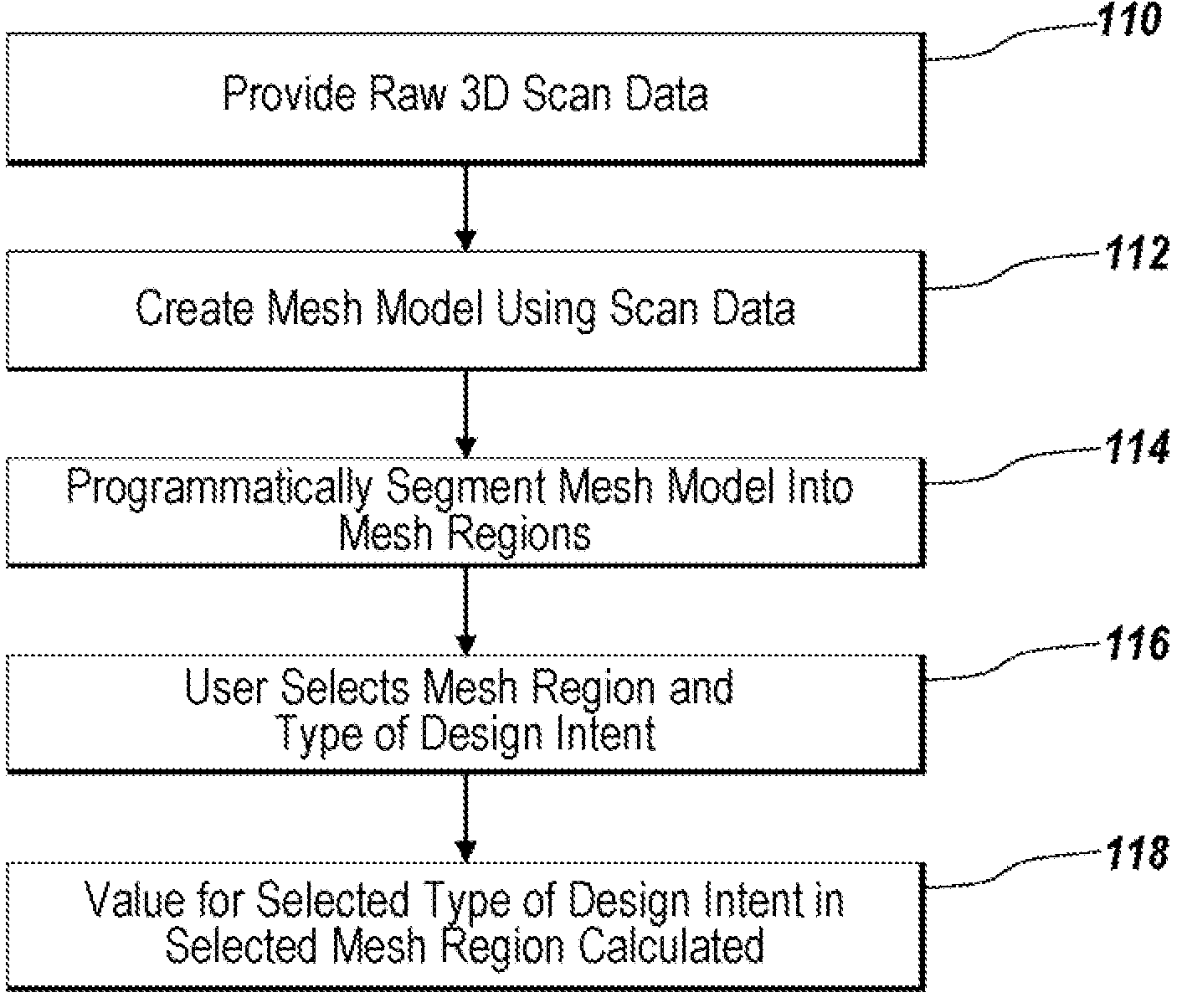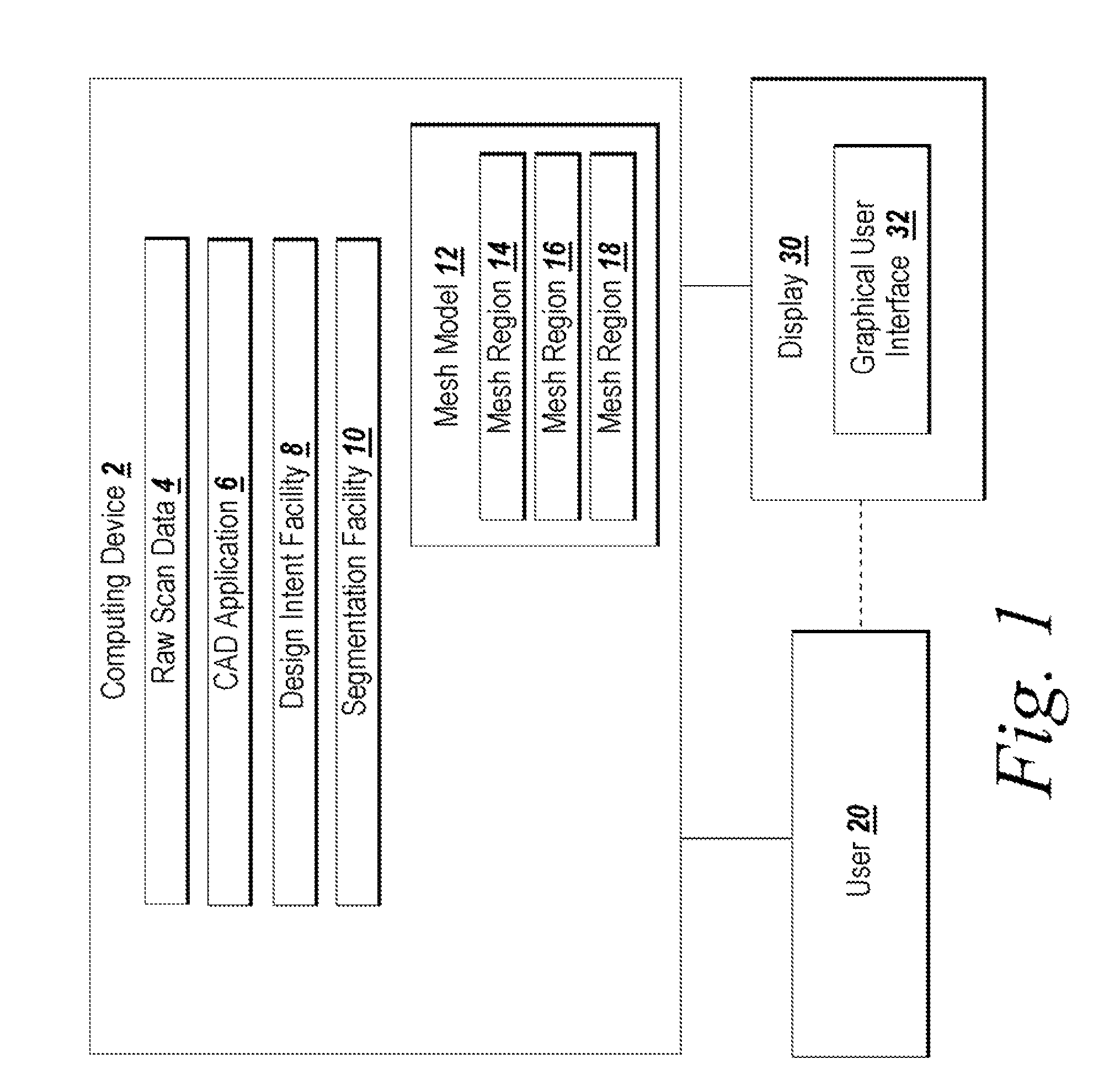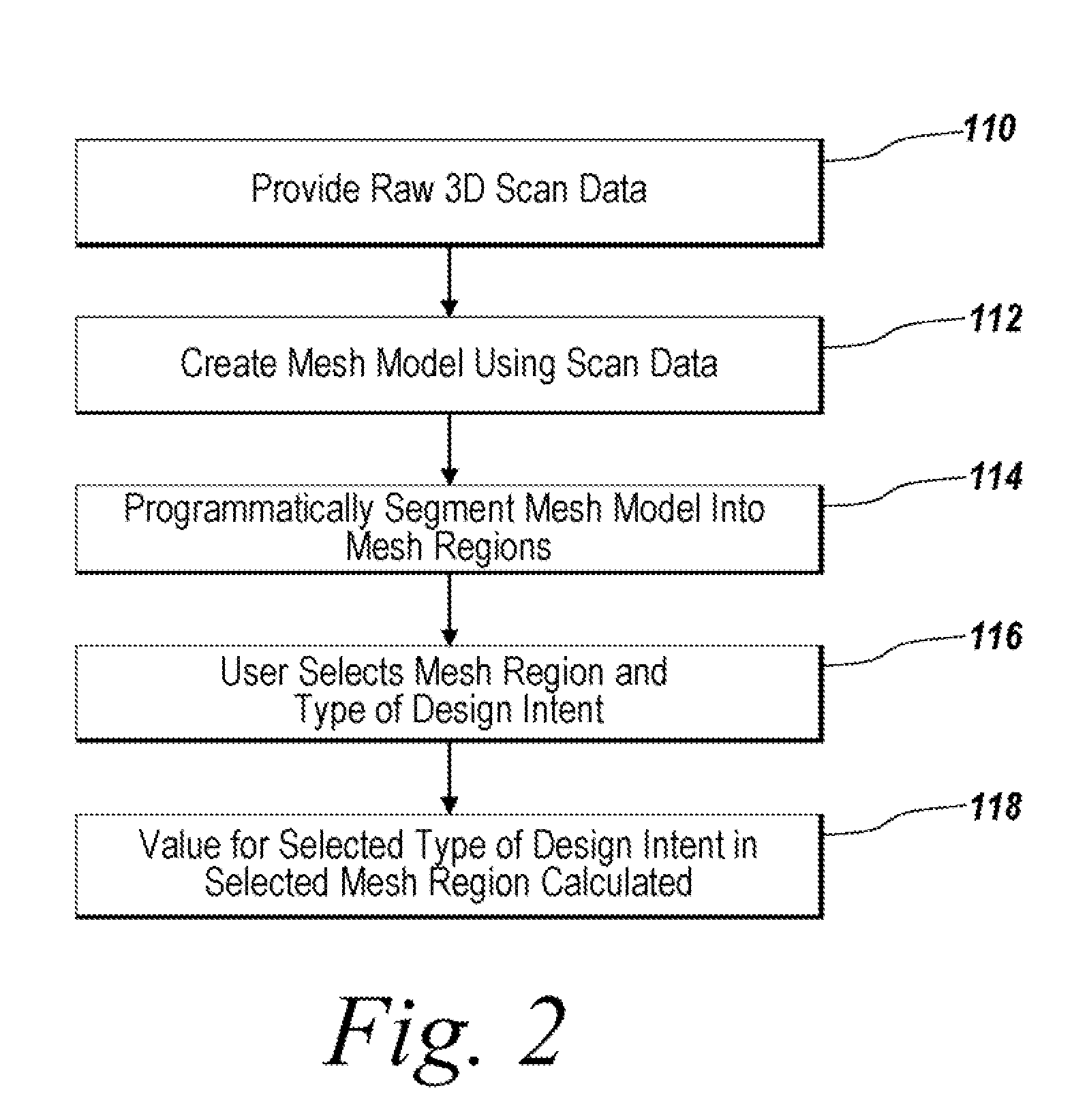System and method for identifying original design intents using 3D scan data
a technology of original design intents and scan data, applied in the field of reverse engineering 3d scan data, can solve the problems of difficult to determine from 3d scan data difficulty in retracing original design intents and their parameter values, and less precise and productive reverse engineering process
- Summary
- Abstract
- Description
- Claims
- Application Information
AI Technical Summary
Benefits of technology
Problems solved by technology
Method used
Image
Examples
Embodiment Construction
[0042]The illustrative embodiment of the present invention provides a user with tools to approximate original model design intents while reverse engineering a three-dimensional object from 3D scan data. An automated process allows a user to target particular mesh regions and specify the particular type of original design feature for which the user is interested in obtaining a parameter value. The present invention programmatically analyzes the underlying mesh data in order to infer the original design intent and present the user with a best estimation as to a value for the original design intent. The user is then able to use the approximation or modify it as required while creating solid model parts.
[0043]FIG. 1 depicts an environment suitable for practicing the illustrative embodiment of the present invention. A computing device 2 includes a collection of raw 3D scan data 4 for a scanned three-dimensional object. The raw 3D scan data 4 is collected from a three-dimensional scanner....
PUM
 Login to View More
Login to View More Abstract
Description
Claims
Application Information
 Login to View More
Login to View More - R&D
- Intellectual Property
- Life Sciences
- Materials
- Tech Scout
- Unparalleled Data Quality
- Higher Quality Content
- 60% Fewer Hallucinations
Browse by: Latest US Patents, China's latest patents, Technical Efficacy Thesaurus, Application Domain, Technology Topic, Popular Technical Reports.
© 2025 PatSnap. All rights reserved.Legal|Privacy policy|Modern Slavery Act Transparency Statement|Sitemap|About US| Contact US: help@patsnap.com



